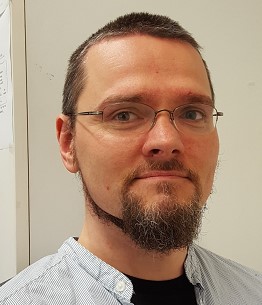Colloqium #26
23 March 2024
Description
On earth, life is undoubtedly based on carbon (C), or more precisely: on carbohydrate chemistry, but does it have to be this way? Yes, because its position within the periodic system of elements (PSE) grants carbon a series of particular properties which let it stand out before all other elements! Besides showing a high natural abundance it exhibits a medium-to-strong electronegativity, resulting in the formation of strong (but not too strong!) and directed polar-covalent chemical bonds as well as a maximal variability in its oxidation states. Consequently, carbon is able to maintain stable bonds “to itself” (single- to triple-bonds) and thus extended linear or branched polymers (chain molecules) and ring structures. It further exhibits very specific features such as aromaticity and chirality and supports both radical and ionic reaction types for its compounds. This diversity is the basis for the generation of complex molecules including RNA/DNA, proteins, sugars, fats, hormones, and other natural substances, without which life as we know it (or define it) can’t emerge and prevail.
There are, however, speculations that the immediate neighbors of carbon in the PSE, on the one side the silicon (Si) atom which is placed below carbon, on the other side the combination of the same-row elements boron (B) and nitrogen (N) to boron nitride (BN), may form equally complex molecular structures under specific physical conditions (on exoplanets). Indeed, some aspects of carbohydrate chemistry can also be found for those systems, but the high level of complexity easily accessed with carbon likely will remain out of reach for all other elements and element combinations in all parts of the universe. This is also due to the essential roles of the reaction medium (water vs. ammonia or methane) and arising ecosystems…
The link expires every week and is renewed regularly. If disabled, just send and e-mail to info[at]phencoco.net to get access.
Speakers

Stefan Mebs: Chemistry studies in Frankfurt am Main and Berlin PhD 2009 in the chemistry department at FU-Berlin (X-ray diffraction/crystallography) Currently postdoc in the (bio)physics department at FU-Berlin (X-ray spectroscopy and computational chemistry) Research focus is the structural elucidation (molecules, amorphous and ordered solids) of catalyst materials and proteins using experimental and theoretical methods.
Typical publications:
- S. Mebs, Chem.Phys.Chem. 2023, 24, e2022006 In Silico Partial N2 to NH3 Conversion with a Light Atom Molecule
- S. Mebs*, B. Braun, R. Kositzki, Ch. Limberg, M. Haumann*, Inorg. Chem. 2015, 54, 24, 11606–11624 Abrupt versus Gradual Spin-Crossover in FeII(phen)2(NCS)2 and FeIII(dedtc)3 Compared by X-ray Absorption and Emission Spectroscopy and Quantum-Chemical Calculations
- S. Mebs, J. Henn, B. Dittrich, C. Paulmann, P. Luger*, J. Phys. Chem. A 2009, 113, 29, 8366-8378 Electron Densities of three B12-Vitamins